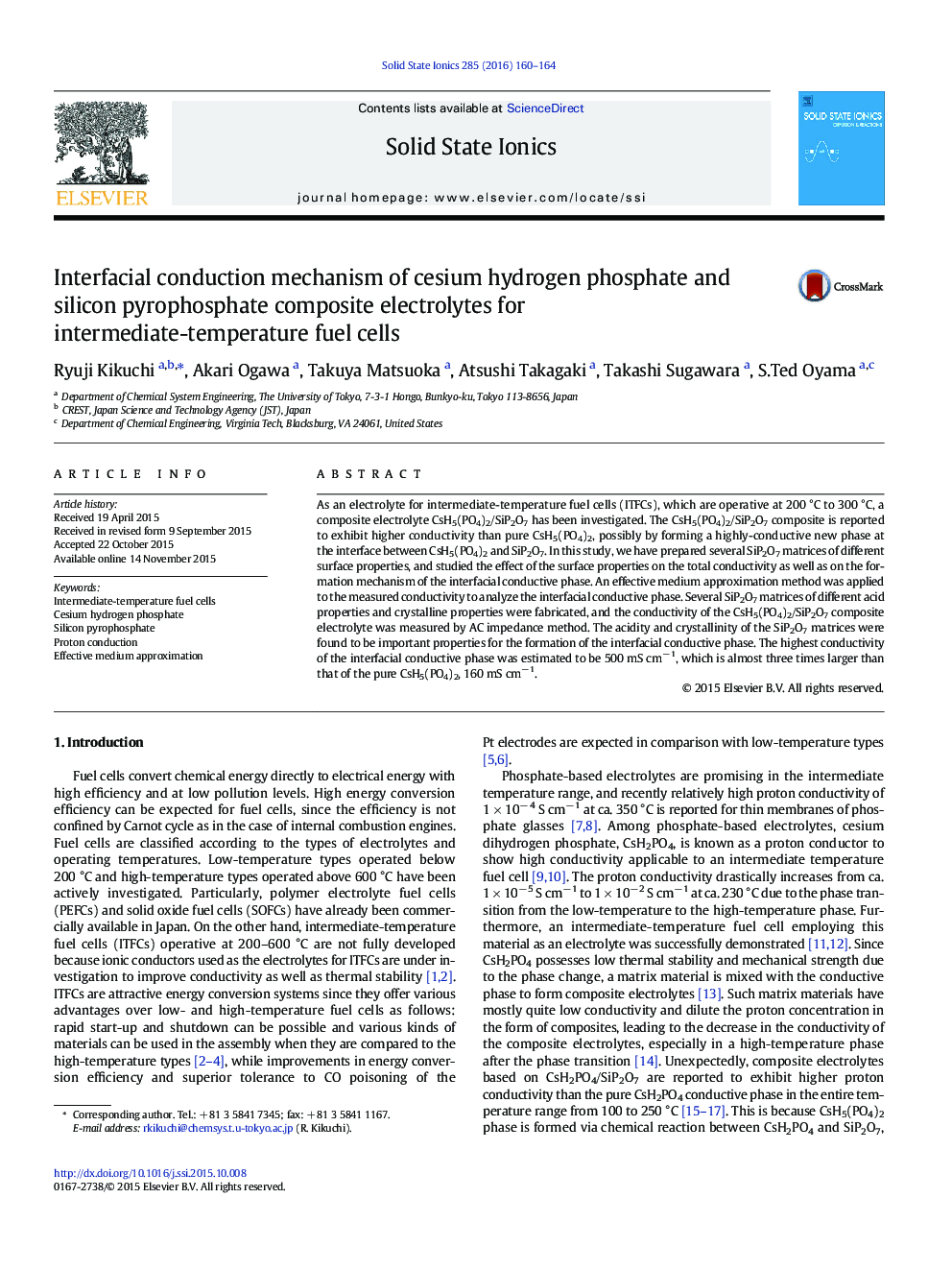| Article ID | Journal | Published Year | Pages | File Type |
|---|---|---|---|---|
| 7745589 | Solid State Ionics | 2016 | 5 Pages |
Abstract
As an electrolyte for intermediate-temperature fuel cells (ITFCs), which are operative at 200 °C to 300 °C, a composite electrolyte CsH5(PO4)2/SiP2O7 has been investigated. The CsH5(PO4)2/SiP2O7 composite is reported to exhibit higher conductivity than pure CsH5(PO4)2, possibly by forming a highly-conductive new phase at the interface between CsH5(PO4)2 and SiP2O7. In this study, we have prepared several SiP2O7 matrices of different surface properties, and studied the effect of the surface properties on the total conductivity as well as on the formation mechanism of the interfacial conductive phase. An effective medium approximation method was applied to the measured conductivity to analyze the interfacial conductive phase. Several SiP2O7 matrices of different acid properties and crystalline properties were fabricated, and the conductivity of the CsH5(PO4)2/SiP2O7 composite electrolyte was measured by AC impedance method. The acidity and crystallinity of the SiP2O7 matrices were found to be important properties for the formation of the interfacial conductive phase. The highest conductivity of the interfacial conductive phase was estimated to be 500 mS cmâ 1, which is almost three times larger than that of the pure CsH5(PO4)2, 160 mS cmâ 1.
Related Topics
Physical Sciences and Engineering
Chemistry
Electrochemistry
Authors
Ryuji Kikuchi, Akari Ogawa, Takuya Matsuoka, Atsushi Takagaki, Takashi Sugawara, S.Ted Oyama,
